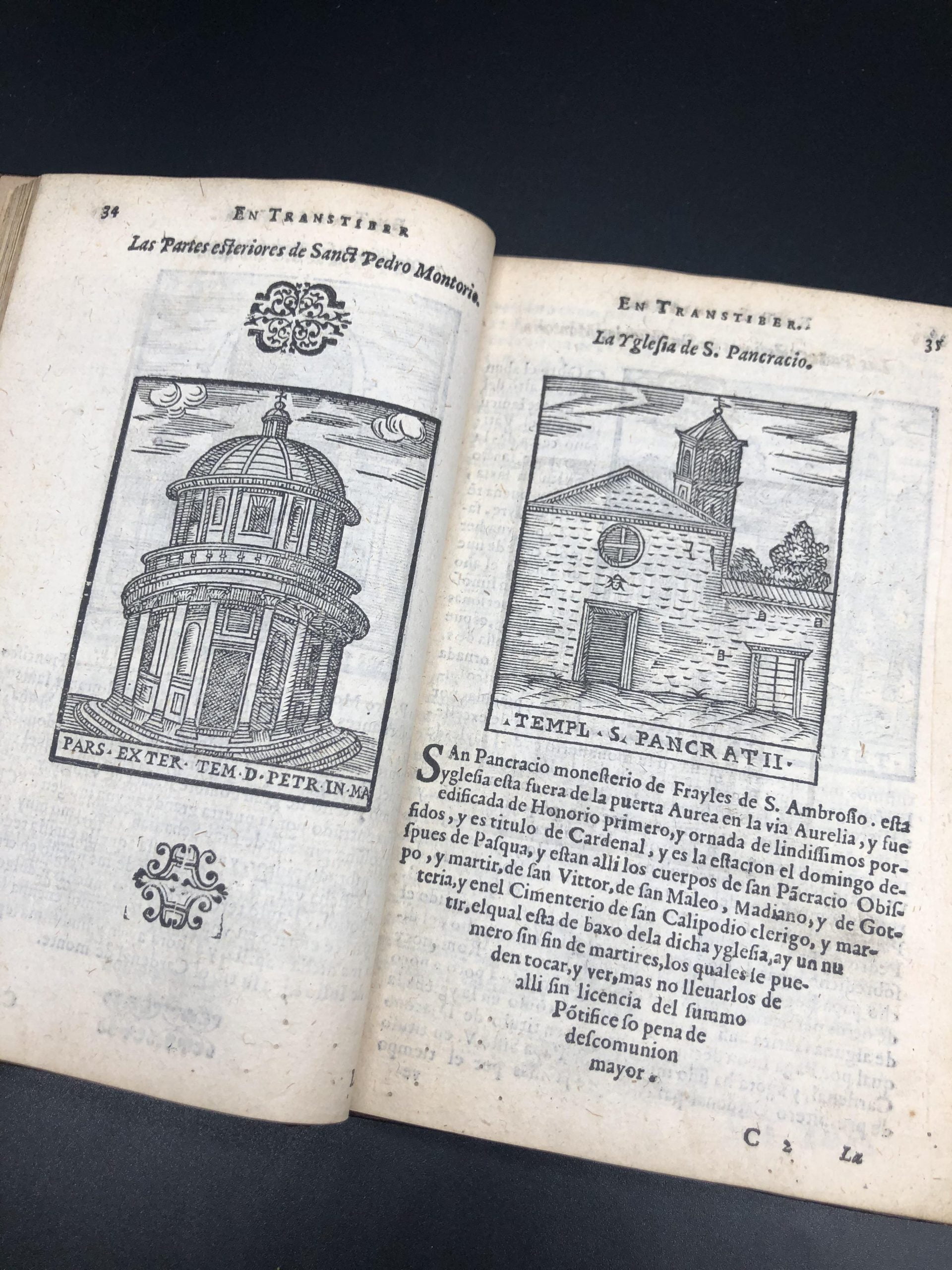[FRANZINI, Girolamo].
FIRST CASTILIAN EDITION
Las cosas maravillosas de la S. Ciudad de Roma
Rome, por Girolamo Francino: por Alessandro Gardane & Francesco Coattino, 1589£5,250.00
FIRST EDITION thus. 8vo. pp. (xvi) 260. Roman letter, little Italic. T-p in red and black with small woodcut view of Rome, allegorical figure and arms of Sixtus V, 103 half-page woodcuts of Roman monuments, decorated initials and ornaments. T-p a bit dusty, thumb marks to a few ll., a little marginal spotting. A very good copy in polished calf by Hering, rebacked with onlaid spine, double gilt ruled, border of tendrils with large fleurons to corners in blind, gilt arms of William Stirling Maxwell to upper board, joints and extremities a bit rubbed, ffep and fly detaching. Armorial label of Charles Brooke to front pastedown, William Stirling Maxwell and binder to ffep, bookplates of J.B. and Michael Bury to rear fep, another of Stirling to rear pastedown.
Scarce first edition in Castilian of this early illustrated guide to Rome. Born in Brescia, Girolamo Franzini (1537-96) moved to Rome, retaining business connections with Venice, to work as a printer and publisher. He specialised in the production of works on the city of Rome and its monuments, from 1588. ‘The history of his publishing house was crucial for the development of a specific type of Roman guidebook’ (Schudt, ‘Guide’, 32). ‘Las cosas maravillosas’ was a translation of his ‘Le cose maravigliose dell’alma città di Roma’ (Venice, 1588), of which it reprised the woodcuts, with a few additions to the text. Probably cut by Franzini himself, the illustrations depict ‘extremely schematically drawn monuments’, with a simplicity which ‘imitates images of sculpture and architecture on ancient coins’ (Tschudi, ‘Baroque Antiquity’, 55). Catering for the international market of religious pilgrimage, it explained how to see the major sights of Rome, the parishes and antiquities, including obelisks and columns. For the pilgrims, it included a list of churches functioning as stations for indulgences and a treatise on ‘the way to earn the indulgence at the stations’. For tourists, it provided a three-day sightseeing programme, since ‘for those who wish to see the marvellous antiquities of Rome it is necessary to proceed in an orderly fashion, not doing like those who look at one thing and then another, and eventually leave having seen only half’. The last part includes useful factual information like chronological lists of popes and emperors, of parishes and confraternities, and a brief survey of the customs of ancient Rome.
No copies recorded in the US.Schudt, Guide di Roma, 163; Wilkinson, Iberian Books, 9197. Not in Fowler, BM STC It., Berlin Cat or Palau. V.P. Tschudi, Baroque Antiquity (New York, 2017).In stock




















